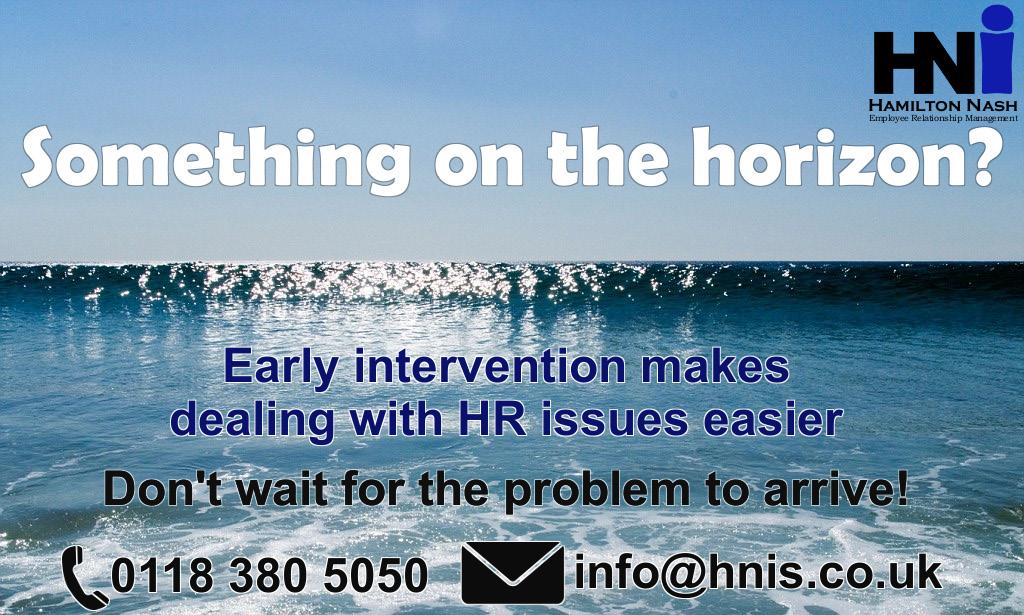
2 minute read
Resolving Conflict at Work
by Jim Moore, Employee Relations Expert at Hamilton Nash
I have previously written for Local Area Magazines about four cognitive biases that we all have. They cause us to get into disagreements because they make us assume that our view of the world is correct, and an opposing view is wrong. I’m a workplace investigator and mediator, and I specialise in managing conflict within businesses. In this month’s article, I’m going to introduce techniques you can use to de-escalate conflict.
Advertisement
De-escalate Before Trying to Resolve
At first, when we disagree with someone, there’s no anger involved. We assume the other person has simply misunderstood and we can set them straight. Of course, they’re thinking the same thing, and so the disagreement continues. Then the negative emotions bubble up, and we can see the other person as an adversary that must be defeated. It becomes a matter of principle!
The problem is that it is hard to have a rational discussion when we’re being influenced by irrational emotions. The first thing you need to do is try to take some of the heat out of the situation.
The Power of “Time Out”
When you are butting heads and people are getting hot under the collar, calling a ‘time out’ can be a very effective de-escalation technique;
“Okay, let me take some time to think about what you’ve said. Let’s get back together in 30 minutes.”
This is a useful technique because:
- It allows time for any emotion to dissipate

- It allows you (and them) some thinking time
- It sends a powerful signal that you are listening to what they’re saying
- They’re more likely to listen to you when you reconvene
The beauty of this is that you don’t have to admit you’re wrong in order to defuse the situation!
When the conversation resumes, the other party will usually be more receptive to listening to you. Now, this technique only helps take the heat out of the situation, but the time it buys you gives you a chance to think about closing the gap with your opponent.
Interests Rather than Positions
Most conflicts, especially ones that have escalated, are a battle between entrenched positions. What people want, what must happen, what must change, and so on. The problem is that this leaves you nowhere to go. Everyone digs in, and the argument gets increasingly bitter.
So how do we break the deadlock? The key to unlocking it is to try and identify what concerns and/or interests lie behind the positions. Instead of arguing about opposing solutions, try to reframe the discussion back to the requirements: what’s important here? What are we trying to solve, or avoid? There’s a good chance you can find some mutual interests that you can agree on. That gives you an opportunity to shift from a why we can’t agree, to a how we can discussion. The problemsolving partnership can be restored.
The ‘time out’ I mentioned before gives you the chance to think about what might be important to the other party. What concerns or interests might be behind their position? What questions can you ask to check those concerns and explore alignment? This is a technique I use a lot in workplace mediations, and it’s very effective.

Of course, this is just a quick introduction to these techniques. If you would like to get help with a conflict at work, or if you sense something brewing, get in touch for a confidential conversation with no cost or obligation.











